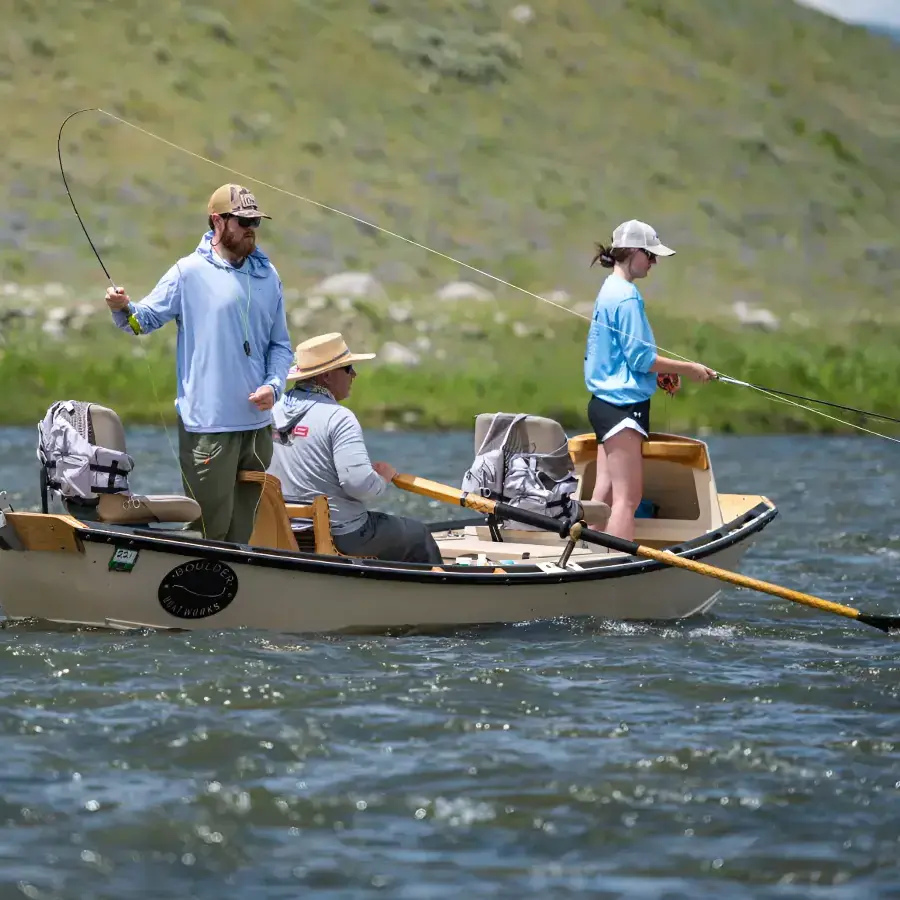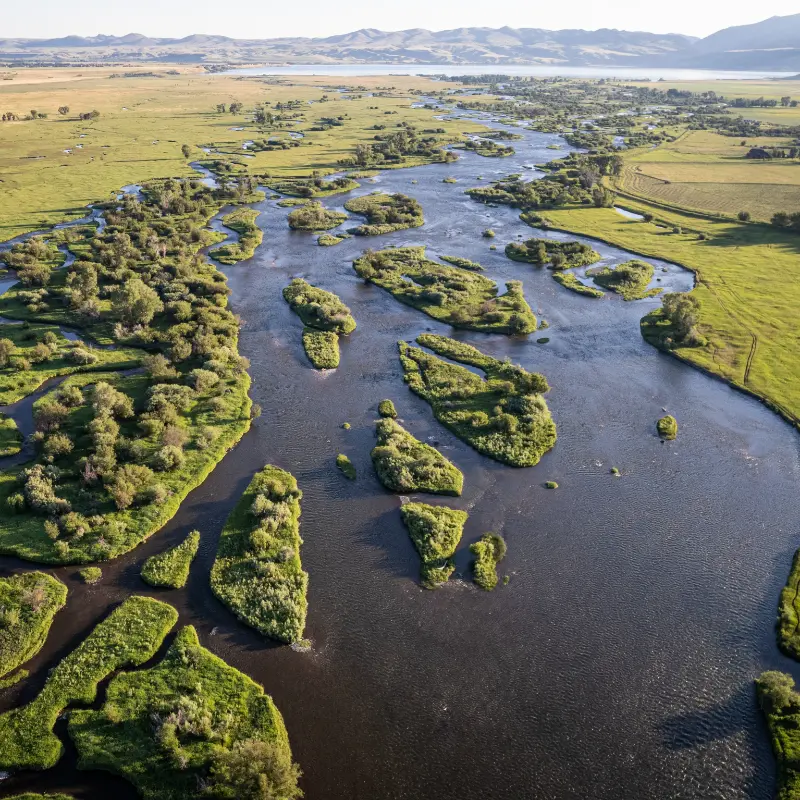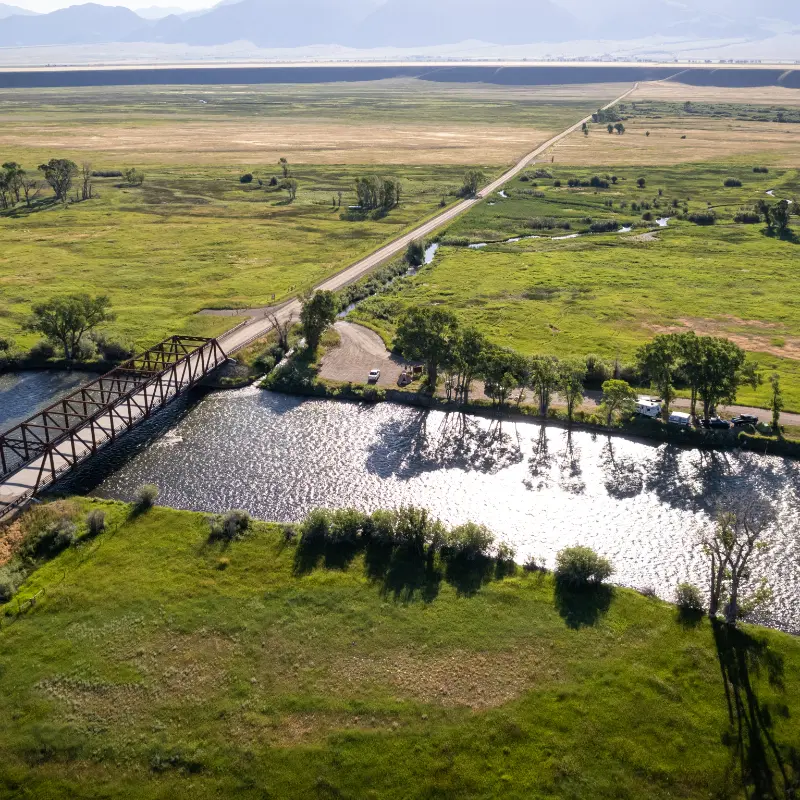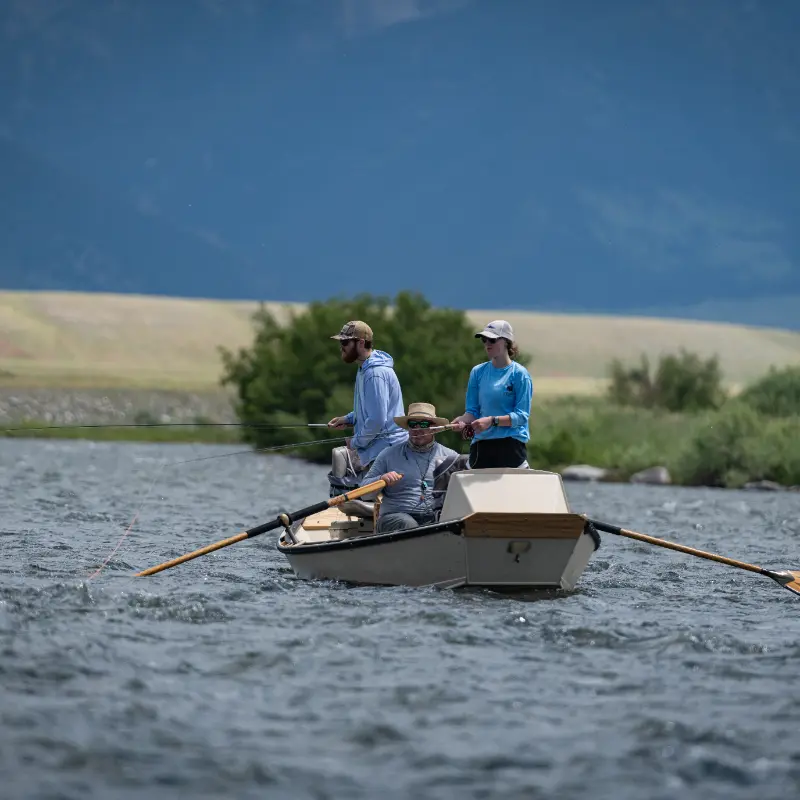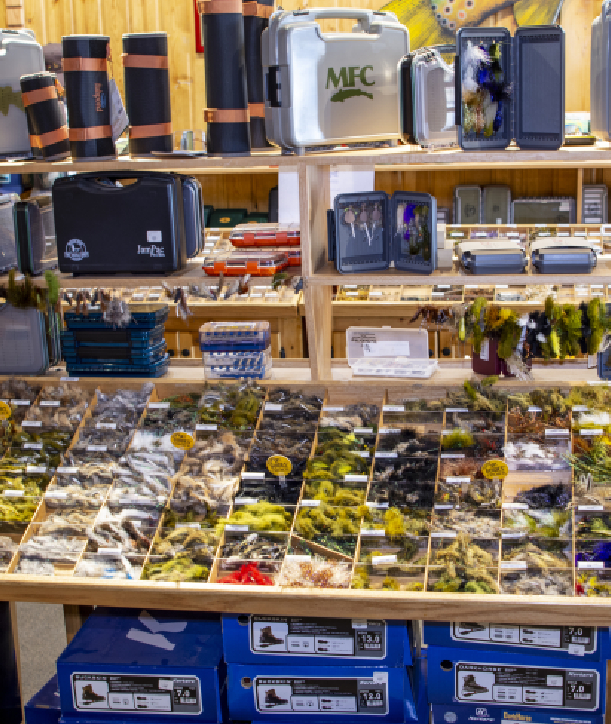
The Fly Guy
Overview Of My Job
My Main Job here at The Tackle Shop is Flies, from doing some of the ordering of the flies, to getting them checked in and put out on the floor, labeling the flies correctly by name and size of the pattern and making sure all our patterns are organized here, or simply just putting them in the right backstock section. And the best part of all at the end of the season around November, COUNTING ALL THE FLIES IN THE SHOP. I am constantly working on organizing the flies here at the shop.
Counting Flies
Once the season comes to an end and things here in the shop start to slow down my task is to count all the flies we have on the floor and all the flies that we have in backstock. I like to get the backstock flies done first and this does not take nearly as long as counting the flies on the floor since all the backstock flies are in packages of a dozen or a half a dozen. All the standard nymphs, dries and smaller streamers come in the packages of a dozen and the larger streamers will come in a pack of half a dozen. The backstock flies are all organized in large bins by the general species of bug, so we have a bin designated for Salmon fly patterns, general stonefly patterns (Skwala, Yellow Sallie and more,) Hoppers, Caddis, Large Streamer, Standard Nymphs and many more bins for certain species and types of flies. When counting the backstock flies it is the perfect time to also get the flies put into their proper bin that they belong in. Flies will get unorganized and moved around in the busy season because we got so much going on, so this is a good way to start fresh and organized for upcoming season.
Counting and organizing the backstock flies typically will take less than a week. After this I go to counting all the flies on the floor and making sure all our patterns are together and organized by size. All the flies in the shop will have the larger size in the bin above it and then the next size in pattern the below it, so it will go size 14 above then to a size 16 and then to a size 18. That is just a general reference for our nymphs and small dries those are our most common sizes for those types of flies. The process we use for counting the flies might not be the most fun way, but it is the most effective to make sure we count all the flies 100% correctly and then if we have a size 16 fly in the bin with the size 18 flies, we can make that correction and put the fly back in its correct bin.
We do this by taking the fly pattern out of its bin say this being the zebra midge black size 20 putting them all on a plate and counting each individual fly. Once we get that number say its 42 total flies, I will write that down on a piece of paper and then go to the next bin. While we have the fly pattern out of the bin we spray and cleaning solution in the bin and wipe it down with paper towel to clean all of the gunk and dust that accumulates over the season, then we put the flies back into the bin and would move onto the next patter above it which would be a zebra midge black size 18. That is the process we will use for all the patterns in the shop. It takes quite a long time, but it works well for us to get and accurate count. You might wonder well what about the different prices of flies how do the organize those and get a count for that?
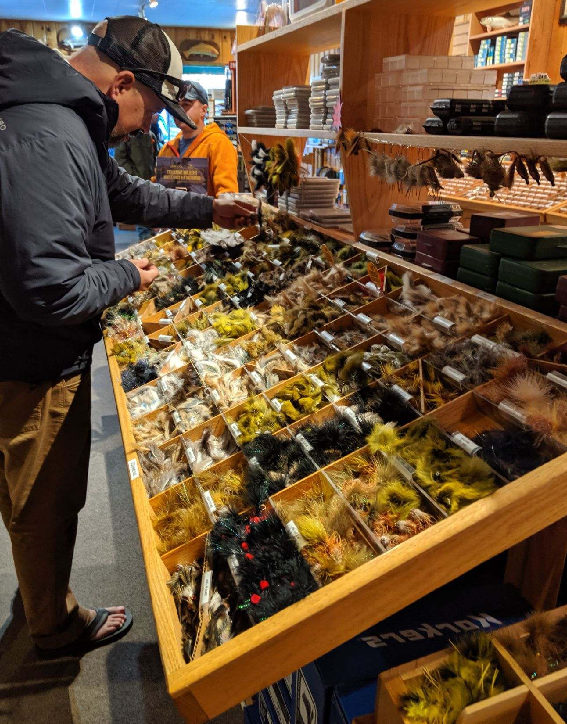
At the shop we have a total of 7 different categories of flies that will be different prices. Standard Nymphs and Small Dries$2.50), Jig Head/Tungsten Nymphs ($2.75), Chubbie’s and Hoppers ($2.75), Buggers and Leech’s ($3.00), Small Streamers ($3.75), Medium Streamers ($4.75) and then Large Streamers ($6.00.) So, when counting I Have 7 different sheets of paper each one has a title of one of those categories I just listed and when counting a fly pattern, depending on the category I will write the count I get onto the certain piece paper that correlates with the correct pattern I am counting. So, in the end all scheme of things we will have 7 different counts of numbers one of Nymphs and Small Dries one For Jig Head/ Tungsten Nymphs and so on. Then in our system we know exactly how many flies of each category we have and then we can add them all up to the number of flies total that we counted this year, and that number would come out to 120,985 total flies this year including flies in backstock.
Ordering Flies
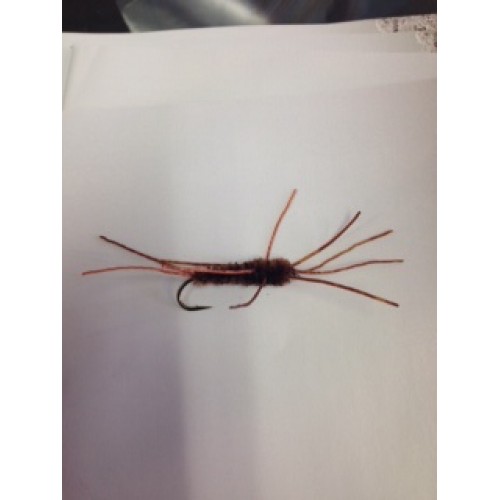
One of the most common questions I get is “how do you guys tie all these flies” Answer is we don’t, it would be super cool if we could, but we just have to many fly patterns and we just don’t have the time for it. Speaking for myself also I am a lousy fly tier, and my flies would not sell very well. I can’t speak for the other guys in the shop though. We order flies from a total of 8 different fly-tying companies, we start ordering flies once the season ends. Riley the shop Manger does most the ordering of flies, but he taught me how to do some, so I Did a couple orders from some of the tying companies we use. So, Blame Riley if we don’t have a pattern that you want… Just kidding. Ordering Flies can be a tricky thing, we have certain bugs in the shop that we just must have for example the Pats Rubber Leg or Girdle Bug.
That fly right there is just one that we can’t run out of, it is such a staple bug here in this river being the Madison and it’s a pattern that we just must have year-round because it works pretty much year-round, and it is defiantly one of our top selling flies here. When it gets tricky ordering flies is sometimes we have a certain pattern that we hear a lot about and get a lot of suggestions to bring them in and when we do that we can’t just go all out and order 20 dozen of them because it could have just been a hot fly for the previous season and then that pattern may not work as well or be as popular the next year and we can’t have that pattern just taking up space. But sometimes we just must gamble and hope that is pays off.
When ordering flies, we get them throughout the whole season our first order of flies coming this season was this month February 2025 and our last order that will come in this season will be August 2025. The reason that we get orders throughout the whole season is since certain Bugs aren’t hatching out on the river yet and we don’t need them here in the shop taking up space. Look at it this way, when is the salmon fly hatch is typically here on the Madison River? Mid-June too early/mid-July. Yes, it is nearly impossible to say exactly when that hatch is going to happen to the date but it’s standard to happen in those two months, so it makes no sense for us to get out salmon fly pattens in March when that Bug species wont hatch for another couple months.
We will start to see those orders of those salmon fly patterns come in in May. Just like the order we had come in February I bet you can guess what flies came in… Yes, it was midges, those are really the main fly that you will see those die-hard fishermen using in these cold cold winter months we have in the Madison valley. An important note for the flies that we have here in the The Tackle Shop, our primary river is the Madison so those are going to be the primary flies that we have here in the shop are species of bugs we see in our river. Yes, we do have some flies here in the shop that will work over on the Beaverhead or the Missouri but majority of our flies here at the shop are bugs that will work here on the Madison River. This just intertwines into ordering Flies for the fact that we want to order flies that will work best on the river in our backyard vs flies that will work best over in the next valley on a different river.
Checking In Flies and Putting Them Out
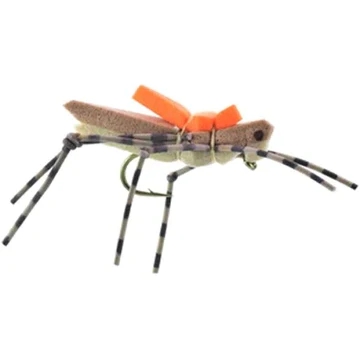
Once we get out fly orders in, we must check them in to make sure that we got all the flies that we ordered for that Shipment. This really comes down to just being organized on how we check them in. Going back to the seven different categories of flies we have; I will write on a piece of paper all the categories and give each one a different color highlight and then go to the invoice that the fly tier sent and just go down the list. Say the invoice says we got 4 dozen BH Hares Ear Olive in the size 18 if that matches up, I will highlight that with the appropriate color highlight designated to Nymph and Small Dry Category. If this order has 3 dozen Cloud 9 Hopper Tan in the size 10, I will highlight that with the color that matches the Chubbie and Hopper category. Say, we have a pattern on the invoice that didn’t get into the shipment, we will contact the company, and they will send us what was missing.
After we highlight all the flies in the invoice we will go through and add them up by the dozen and by the category that they belong to. So, in this shipment we got 82 dozen nymphs and small dries we that is a total of 984 total flies for that category and then we will go into our system and put in 984 for the nymph and small dry category and then that adds into the total count of flies we have so our numbers match up. Once we get the flies all check in it is time to get them out on the floor, this is a pretty simple task, if it’s a pattern that we already have out and labeled correctly and there is room in the bin we just simply dump those flies out of the package into the correct bin. If the bin is full then we will keep that fly pattern in the package and put them into backstock in the correct backstock bin,
Trina’s Salmon fly pattern will go into the salmon fly backstock bin. We got a new pattern that doesn’t have a home on the floor yet, we will find an empty bin on the floor or divide the bin in half and do some shuffling around to create room, put that new pattern in the bin and make sure to write the name of the pattern and size and will go label it in the back of the shop and put a name to the face for that fly pattern. It is important to do that step if we get a new pattern, so we don’t have to go back into the fly catalogs and look for the pattern.

Overall, that Pretty much some’s up the basic stuff we do here at the shop from when those flies come in the door to getting checked in and put out on the floor or into backstock and the best part of all counting the flies and organizing them. It’s kind of like someone who uses a wood burning stove to heat their house, they touch that firewood multiple times throughout the process before that piece of firewood goes into their stove to heat the house. Same thing here we handle every fly here in the shop a couple times before it gets bought by somebody and catches them a huge brown trout here in the Madison River or stuck in a tree behind them.

